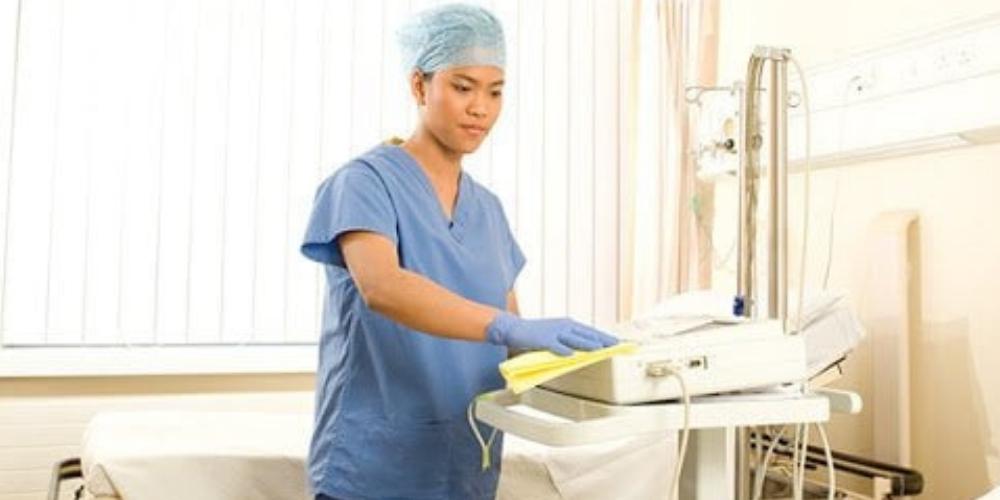In hospitals across the United States, hospital-acquired infections continue to be a top of mind concern for infection prevention professionals. The CDC reports that 1 in 25 hospital patients in the U.S. contracts a hospital-acquired infection per year, and that number grows when you include patients treated in other healthcare settings such as clinics.
The CDC has categorized healthcare-acquired infections, a broader term which encompasses all healthcare facilities, as a “winnable battle” and has set out a variety of guidelines for preventing their spread.
To prevent the spread of infections in hospitals, infection preventionists with these facilities in their purview must outline infection control measures and communicate them to medical staff. Clinicians working in these settings play a vital role in preventing the spread of hospital-acquired infections by practicing infection control strategies, such as proper hand hygiene.
Three of the common methods of infection transmission, as defined by the Winnipeg Regional Healthy Authority, are direct, indirect, and airborne. Direct transmission of infections constitutes direct contact with a colonized or infected individual. Indirect transmission also occurs via contact, but with an infected object rather than an infected individual. Airborne transmission occurs when dust or other small particles remain suspended in the air and transmit infection to susceptible individuals. Of the three methods, airborne transmission is one of the most challenging to combat as it requires airflow control via special ventilation systems, according to the Winnipeg Regional Health Authority.

Both direct and indirect transmission can be combatted through a series of hospital disinfection measures. Beginning with the principle of hand hygiene to prevent direct transmission, clinicians can take personal measures to protect themselves and others from the risk of infection. This is particularly important considering the current COVID-19 pandemic, which has forced physicians and staff to practice increased distance and make use of personal protective equipment, to prevent the spread of the respiratory virus.
Below, we highlight 3 ways medical practitioners can improve hospital infection control:
- Disinfect with hospital-grade sprays and wipes
To combat indirect transmission of the virus, medical staff should disinfect surfaces with which the patient will regularly come into contact. This is especially important in areas such as the patient’s room, or an operating room where the patient may be most exposed. These surfaces should be disinfected with hospital-grade sprays or wipes that are capable of combatting hospital-acquired infections. For example, the Parker Protex spray and wipes are hospital-grade disinfectants effective against COVID-19 and 40 other pathogens.
Many times, these disinfectants are safe to use on equipment as well. As the graphic below shows, contaminated surfaces can range from the patient’s bedrail to the sink. Even medical equipment, such as monitors and IV pole, are areas that can be contaminated. Therefore, sprays and wipes that can disinfect a variety of surfaces and medical equipment, such as surgical monitors and ultrasound transducers, should be used to provide the most comprehensive hospital disinfection solution.

2. Use high-level disinfection or medical device sterilizing ovens
In addition, medical equipment that comes into contact with multiple patients creates an infection hazard. In coming into contact with an infected patient or clinician, the device could transmit the infection to another individual if it is not properly disinfected. Cleaning and low-level disinfection should be used in tandem with high-level disinfection, rather than separately, to ensure the maximum level of infection control is achieved. Proper hospital disinfection protocols will include high-level disinfection for medical devices.
For example, ultrasound transducers can undergo a high-level disinfection process by using a disinfection soaking station. These stations use a mix of disinfectants and chemicals to ensure maximum sterilization and patient safety. Moreover, other medical devices, such as surgical instruments, can undergo high-level disinfection by being placed in a sterilizing oven after being cleaned and disinfected. These additional steps in the infection control process underscore a reduction in infection transmission rates and form an important part of hospital disinfection practices.
3. Promote the use of medical gloves by medical staff
The use of medical gloves has come under national attention due to the spread of COVID-19. This barrier between clinician and patient is an important step in reducing the risk of hospital-acquired infections via direct contact. Medical gloves come in multiple sizes, materials, and configurations. Clinicians can use non-sterile gloves when examining patients or performing non-invasive procedures. However, when performing invasive procedures or in other high risk situations, clinicians should resort to sterile gloves to reduce the risk of transmission. These gloves are also available in latex-free materials which are ideal for medical staff with latex allergies and also help avoid triggering a reaction from patients who may have one.







